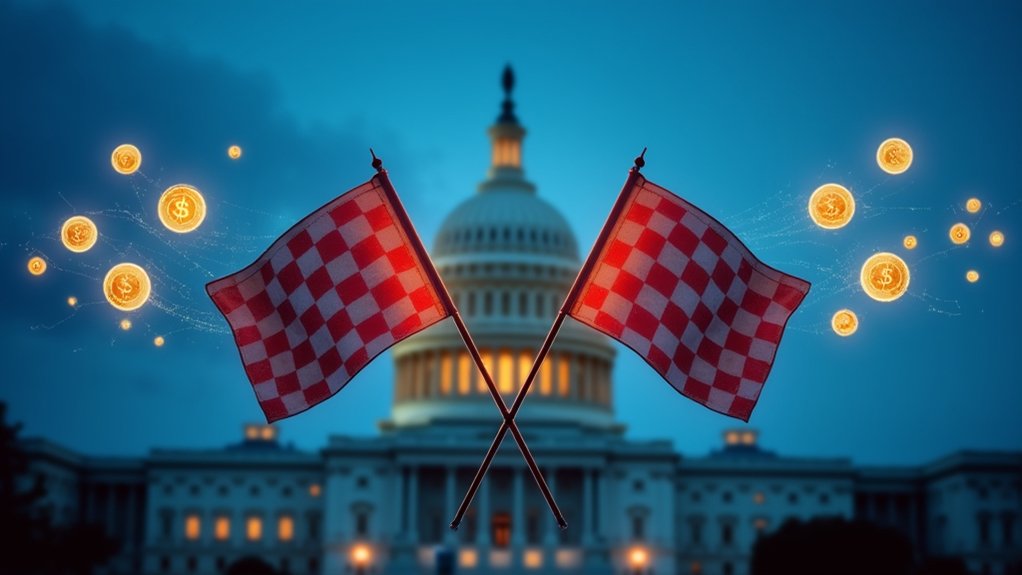While Congress has spent years dragging its feet on crypto regulation, two competing stablecoin bills are suddenly racing through Capitol Hill like caffeinated teenagers. The House’s STABLE Act and Senate’s GENIUS Act (yes, they really love their clever acronyms) are sprinting toward President Trump’s desk, with both chambers aiming to beat the August 2025 recess deadline.
The House Financial Services Committee already gave its blessing to the STABLE Act in April, with Chairman French Hill and Subcommittee Chairman Bryan Steil leading the charge. Their version throws down some pretty clear rules: no interest payments on stablecoins (sorry, yield hunters), but hey – community banks can use stablecoin reserve funds as deposits. Not a bad trade-off. With the market cap exceeding $230 billion, the stakes for proper regulation couldn’t be higher.
Meanwhile, the Senate’s GENIUS Act is playing it cool with smaller issuers, letting states handle regulation for anyone with less than $10 billion in circulation. Digital Chamber CEO Cody Carbone thinks it’s a slam dunk, predicting Senate passage within weeks. Both bills require issuers to maintain one-to-one reserve backing for all stablecoins. Smart contracts enable automatic compliance monitoring of these reserve requirements.
But here’s where it gets messy – the two bills are about as compatible as oil and water when it comes to foreign issuers and state-versus-federal oversight.
The banking crowd has opinions, naturally. Independent Community Bankers of America is doing victory laps over the no-yield provision, while others are freaking out about potential Fed account access. Some are worried this whole thing might accidentally birth a central bank digital currency. Oops.
Trump’s administration is pushing hard for this legislation, seeing it as their chance to cement America’s digital asset dominance. Industry insiders admit they’re shocked by the sudden speed – like watching your grandparents discover TikTok and become overnight influencers. But they’re not complaining.
The clock is ticking, though. If Congress doesn’t get its act together before the 2026 midterms, this whole regulatory lovefest could evaporate faster than a crypto pump-and-dump scheme.
For now, negotiators are optimistic about hammering out the differences between the bills. Time will tell if they can stick the landing.





